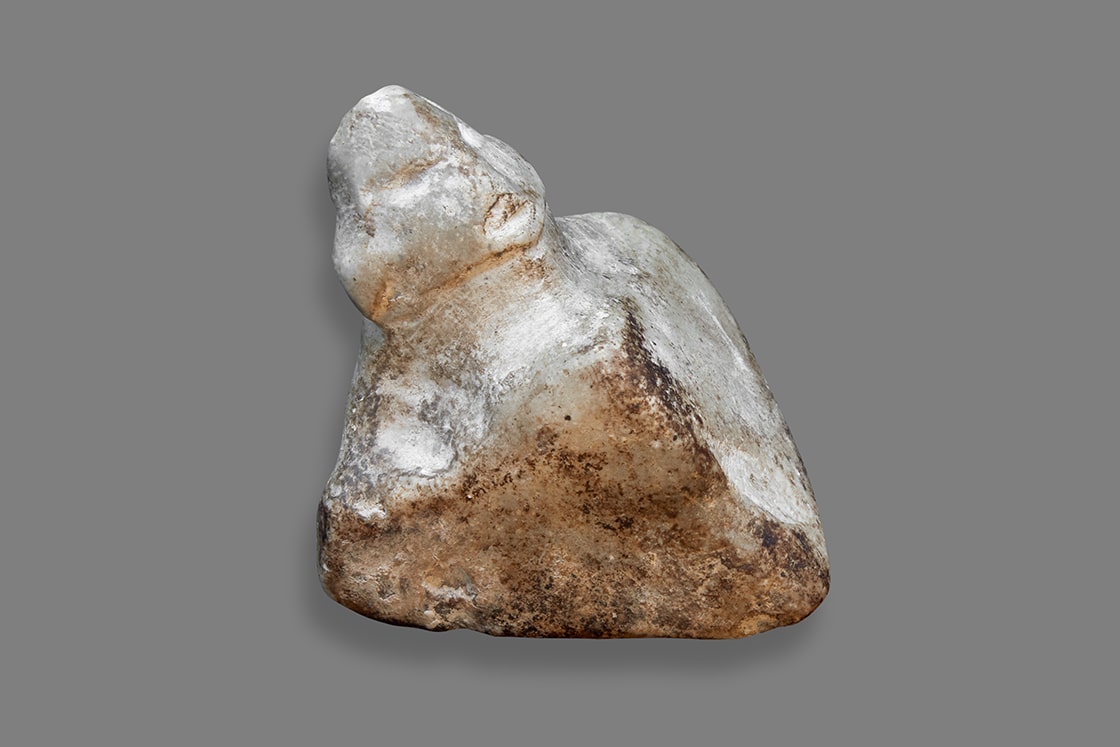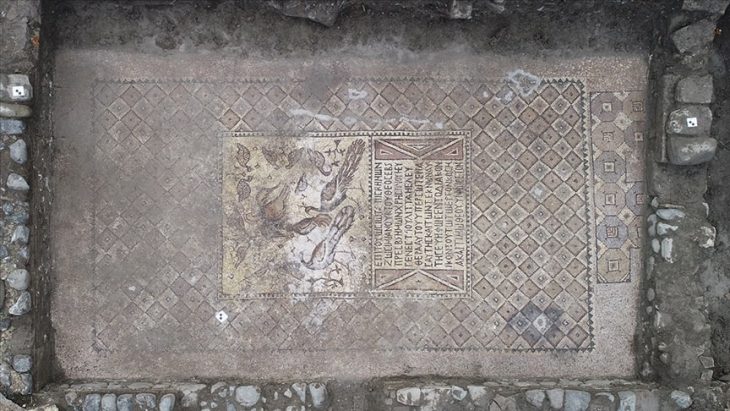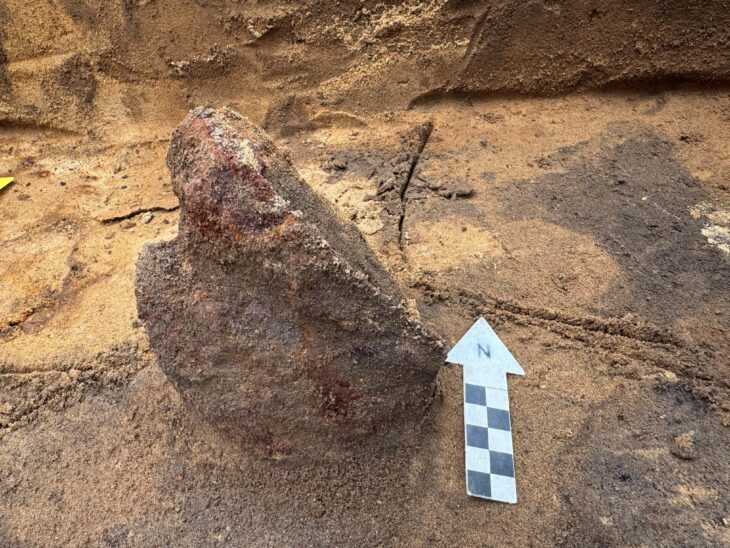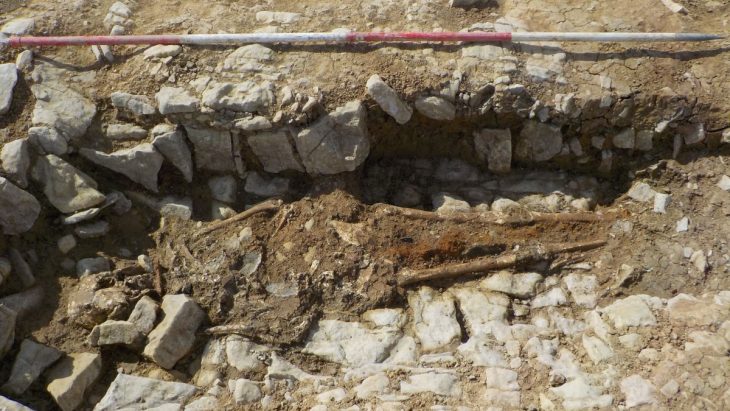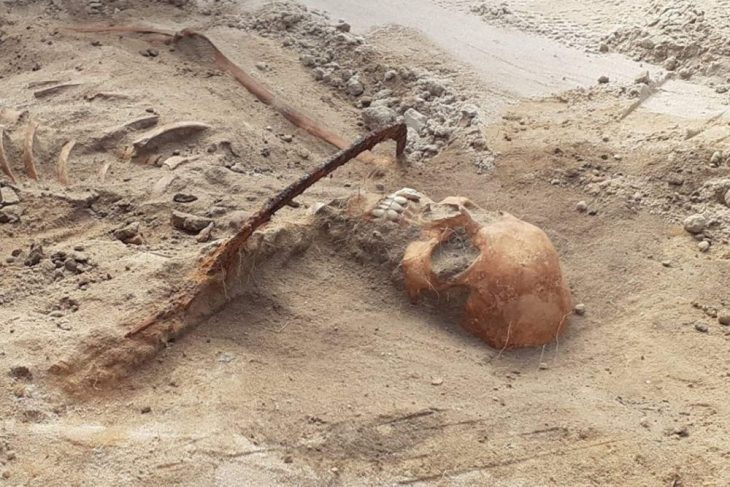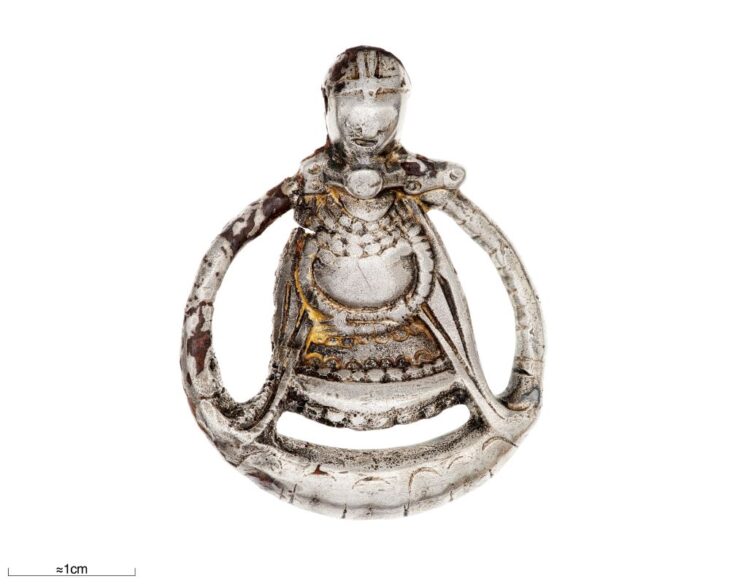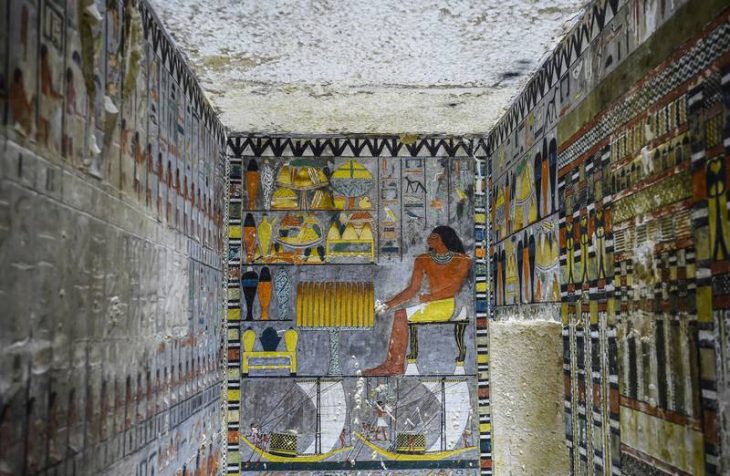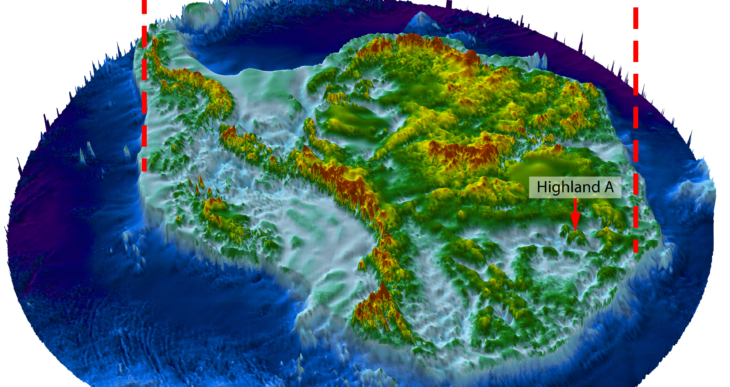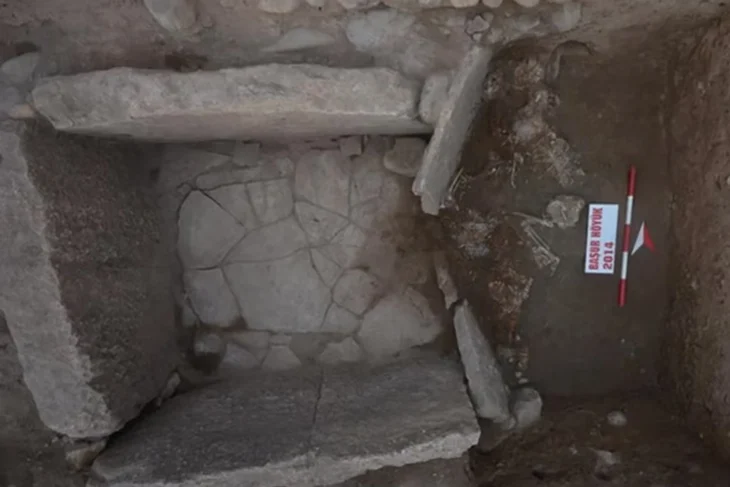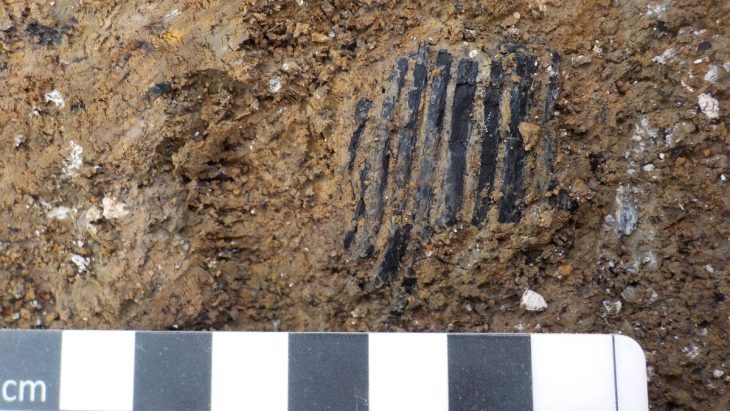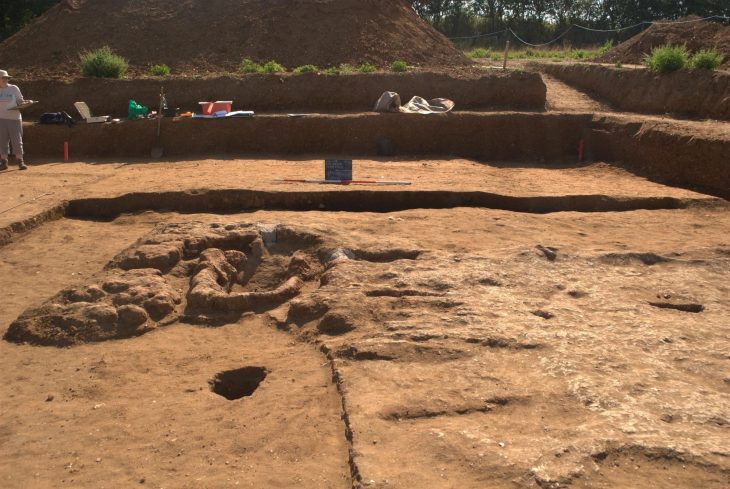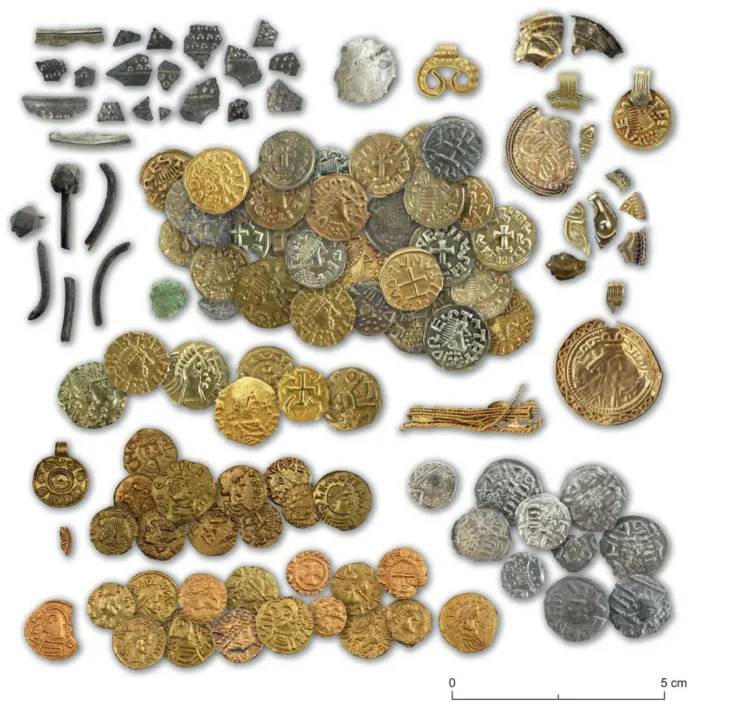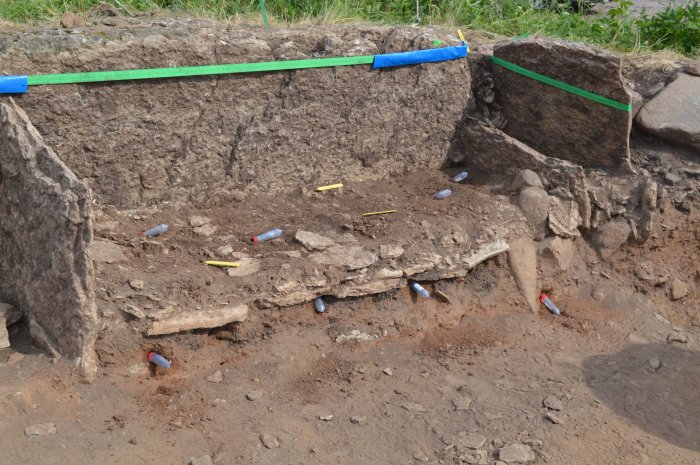In the 29th season of the excavations in Çatalhöyük, one of the first urbanization models in Anatolia, in the Çumra district of Konya, located in the middle of Turkey, an 8,500-year-old marble statuette was found.
A 5 cm tall prismatic figurine with an indeterminate gender and a leaning back human shape thrilled the excavation team at the 9,000-year-old Neolithic City of Çatalhöyük, where the female figure usually stands out.
Head of Excavation, Anadolu University Faculty Member Assoc. Dr. Ali Umut Türkcan told Anadolu Agency that they closed the second season with important findings such as the new neighborhood and street unearthed in the summer, during the excavations carried out under his leadership.
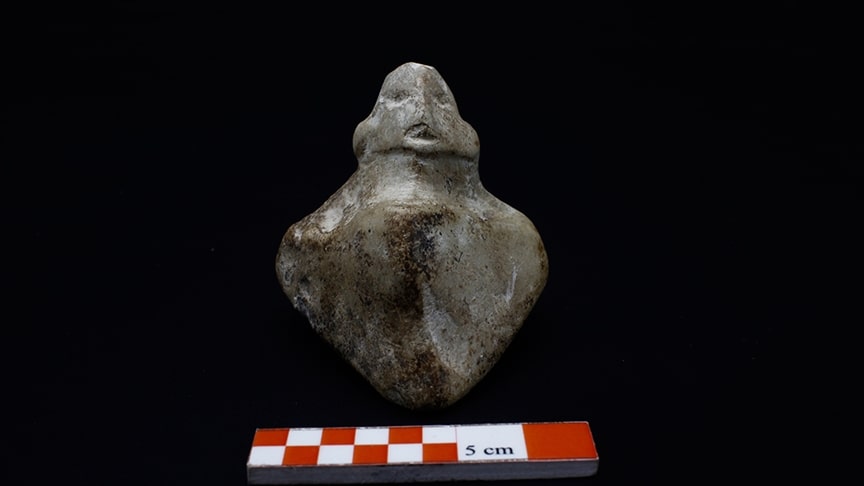
Latest explaining that the most recent excavations in 2016 found marble female statuettes in the southern mound, Türkcan said:
“This year, we opened a large area called ‘North Terrace’. During the excavations carried out in this area, a marble human statuette was found at the foot of a plastered wall while excavating parts of ‘Place 66’, which is filled with rubble and has burn marks at the base, which was also used as a warehouse. The find was found placed next to an obsidian arrowhead and a lump of lime that we don’t fully understand. Like other similar finds, we can say that it is an example that repeats the way it was found with a votive obsidian tool in abandoned and buried structures.”
Türkcan emphasized that this marble statuette is a piece that is rarely seen.
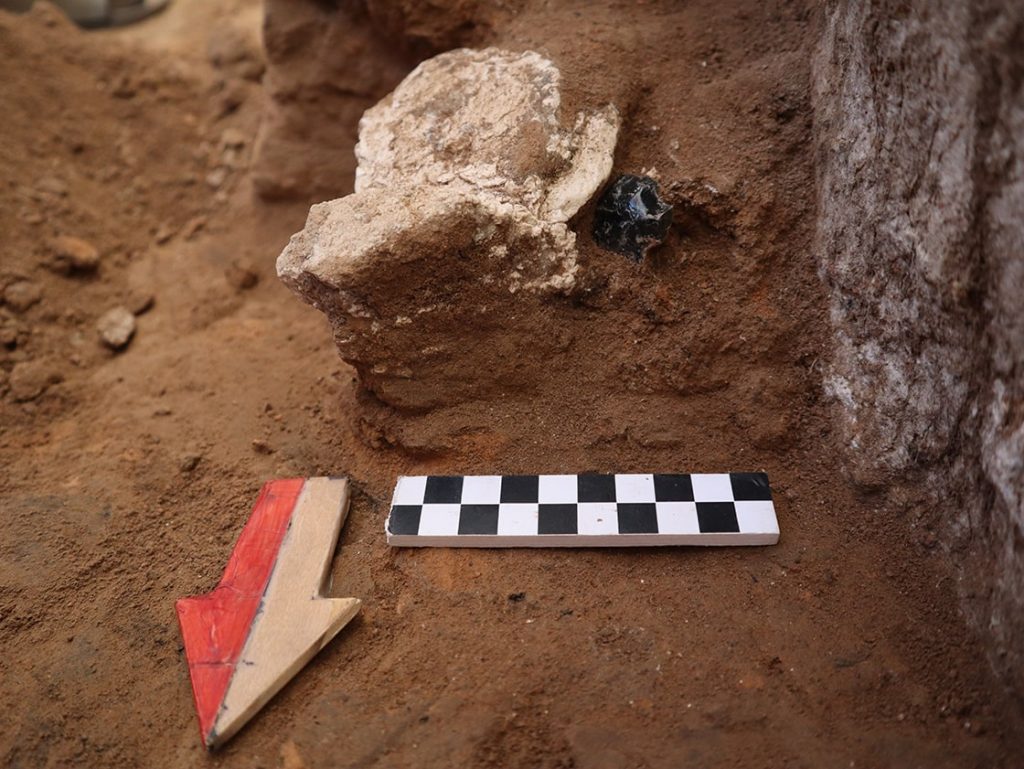
“This example of ours is reminiscent of figurines identified as male, leaning back slightly and reminiscent of figurines thought to be on an animal, similar to those found in excavations in the past. When Çatalhöyük is mentioned, it is thought that there is always a female representation and a center associated with female fertility.”
“The shaping elements of the head of our marble figurine, which is this year’s find, are slightly different from those found in classical Çatalhöyük. It is seen that his head is elongated and is depicted with a triangular head in the extension of his body. Very fine processing details seem on the figurine, even the chisel marks on the neck.”
Türkcan added that Çatalhöyük is always open to big surprises.
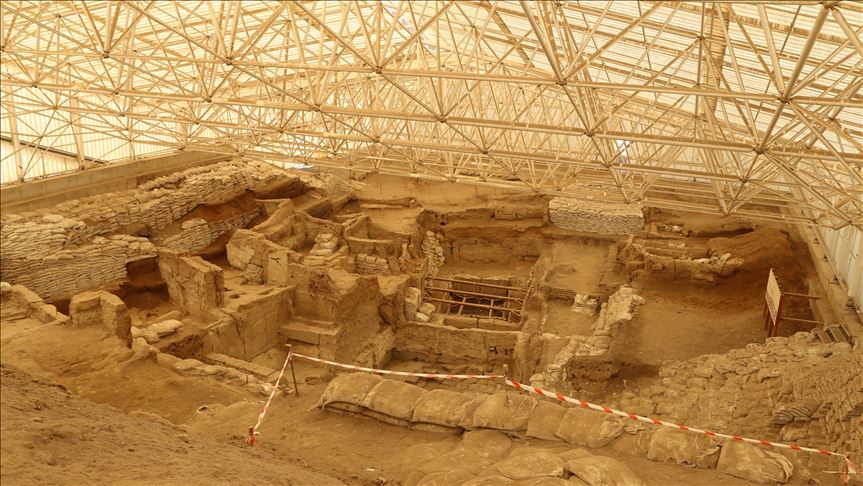
Çatalhöyük
Çatalhöyük is 10 kilometres east of Konya’s Çumra Township. The tumulus is a hill with two flat areas with different altitudes. Because of these two elevations, it is called “çatal,” meaning fork.
Çatalhöyük was first discovered by J. Mellaart in 1958. There were a number of excavations here in 1961-1963 and 1965. The studies made on the western slope of the hill revealed 13 layers. The earliest settlement in the first layer dates back to 5500 B.C. This dating done by examination of style was also proved using the Carbon 14 dating method. The first settlement was a center that sheds light on the history of humanity with the first house architecture and remains of the first sacred structures.

